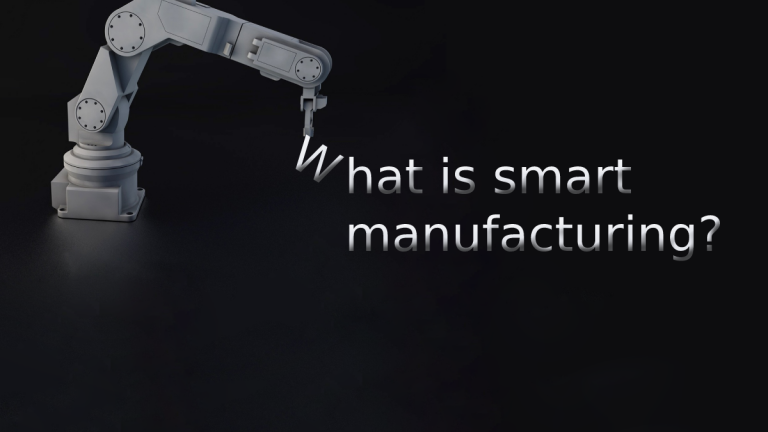Smart manufacturing is a buzzword that’s garnering a lot of attention recently. It has made its way into Gartner’s charts many times, and after the COVID crisis, many will be looking into smart manufacturing. But what exactly is it? Let’s have a look.
What is smart manufacturing?
Smart manufacturing is not a single technology, but an approach towards manufacturing using IIoT, artificial intelligence, Big data analysis, and other cutting edge technology to optimise the processes. It will involve a lot of automation and large scale use of industrial robots. The concept is about overcoming the inefficiencies of traditional manufacturing processes through data and automation.
In a traditional manufacturing process, there tends to be a lot of wastage in terms of materials, energy, and human resources. While over the decades it has come a long way, there’s a lot of room for improvement. With the availability of better computational resources, data visualization, and smarter algorithms, companies are able to find hidden losses and inefficiencies. And better technology is available now to fill in these gaps.
To get a glimpse of what smart manufacturing looks, one needs to look no further than the Tesla gigafactories. A large portion of the manufacturing process is completely automated(the same can be said for most auto manufacturers). And robots line the factory floor, carrying out even the final assembly processes.
Fully automated factories are not exactly a new thing though. Lights-out factories have been in existence since almost 2001 in Japan. The entire process in these factories are automated with zero human intervention. The difference is that then the process was not available for all types of manufacturing. Smart manufacturing solutions try to make this available for all.
Big data
The advent of the internet of things has presented us with a treasure trove of data. Each and every piece of equipment can now stream data about its functional parameters. And with big data processing technologies we are able to visualise, analyse, and find insights from even petabytes of data.
In large scale manufacturing, even seemingly minor inefficiencies can add up real quick leading to huge losses. A minor leak could be causing thousands of dollars of loss, and it may never even be noticed. But by analysing sensor data, algorithms can prevent this and make data driven decision making possible.
It’s not just large businesses that can take advantage of this. Even a couple of years ago, experts were worried about how industries were going to cope with the large amount of data. But now the landscape has shifted dramatically. With major tech giants offering Big data storage, visualisation and analysis solutions, companies can rake in the benefits of Big Data without investing large resources.
IIoT
As mentioned above, the internet of things created a treasure trove of data. But IoT also opened up a lot more opportunities. It simplified automation and remote control. And since the early years of industrial internet of things has grown a lot.
Initially, most of the development in IoT was centred around developing sensors and boards and connectivity options, or rather building the building blocks. This meant investing in IoT was a difficult process. To build a solution, organisations had to source components and elements separately. And only early adopters with sufficient resources were making use of them.
IIoT is very different now. Ready to go solutions are available for everything. From deploying sensors to collecting data from legacy systems off-the-shelf solutions are available.
Maturation of other technologies have also helped further the adoption of IIoT. Big data processing technologies have certainly helped. Artificial intelligence systems that can leverage the data and improve performances are available now.
Artificial intelligence and smart manufacturing
Advancements in artificial intelligence mean it is now possible to automate things that were never thought to be possible. With machine vision and AI, a camera can identify materials, obstacles in the way, other objects, and safely carry out operations. Machines are more flexible and capable of carrying out more operations. Previously individual machines carried out individual tasks(Oversimplification? probably).
Artificial intelligence is now capable of making factories more efficient. It is capable of better inventory management, avoiding bottlenecks, and making the process smooth. It has reduced maintenance costs through predictive maintenance and improved safety. Earlier, machines had to undergo routine maintenance even if they’re working properly, but now it is possible to predict when a machine may break down. This has significantly cut down maintenance costs.
Combine AI with IIoT and you can reach new heights of quality assurance and control.
Advanced robotics and rapid prototyping
With advancements in robotics, complex manufacturing processes can now be automated. Machines are capable of doing more and more than that, they’re able to adapt better. With traditional machines, for different products, you need new tooling. Even if there’s a change within the existing product, tooling has to be changed.
But with advances in robotics in manufacturing, it is possible to use the same machinery for different purposes. New designs mean simply reprogramming them.
And in the case of rapid prototyping tools like 3D printing or CNC technology, simply uploading a different design file. At this point, rapid prototyping is a misnomer in some case. 3D printing is finding applications in manufacturing as well and not just prototypes. We’re at the stage where we can print out even rocket engines.




